- Open today, noon to 5 pm.
- Parking & Directions
- Free Admission
Agony and Ecstasy:
Contemporary Stained Glass by Judith Schaechter
September 20, 2019 — January 5, 2020
Glass Projects Space
Judith Schaechter’s work probes the extremes of human experience and the intersection of the body and mind.
The overpowering emotions of agony and ecstasy are similar in intensity and create tension between illusion and truth. An important contributor to contemporary glass, Schaechter uses the very old and traditional medium of stained glass to create modern narrative artworks full of pathos, power, melancholy, and mystery.
Stained glass has its origins in medieval Europe as an architectural element used to decorate churches and deliver religious messages. Although Schaechter doesn’t focus on religious content, she invokes the aura of religiosity in her artwork to enhance the seductive power of her images.
Judith Schaechter (American, b. 1961)
The Life Ecstatic, 2016
Stained glass in lightbox
Lent by Judith Schaechter and Claire Oliver Gallery, New York
Photograph by Dominic Episcopo
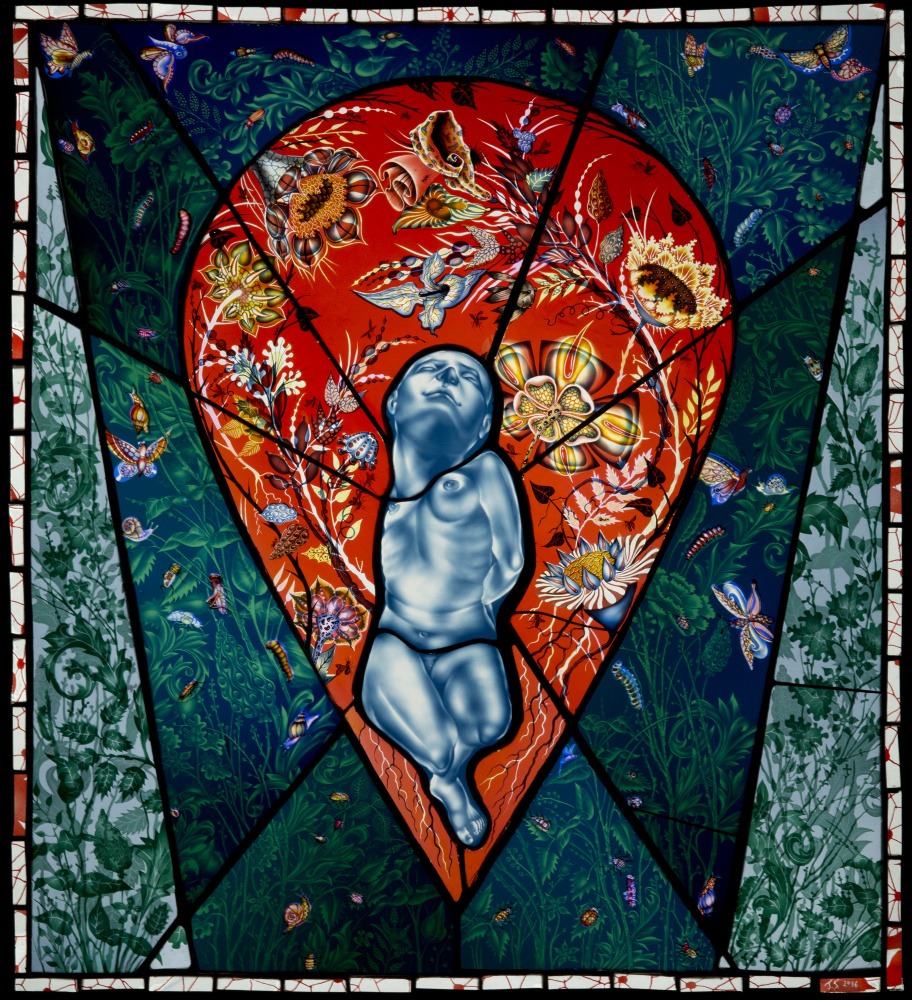
Shown above:
Judith Schaechter (American, b. 1961), Realism (detail), 2016, Stained glass in lightbox, Lent by Judith Schaechter and Claire Oliver Gallery, New York, Photograph by Dominic Episcopo
Human figures are arranged against a lushly-patterned color field in poses of transcendence or anguish, creating imagery that is powerful, provocative, beautiful, and disturbing. The figural scenes are distorted and borderline grotesque; yet they are still beautiful because of the illuminated, colored glass and the richness of detail.
The works are meant to be understood as paintings rather than architectural glass. She uses sandblasting, engraving, and layering of colored glass sheets to create depth, texture, and subtle variation in her color palette, much like a painter mixes pigments. The glass is assembled using a traditional copper foil and soldering techniques and then illuminated in a lightbox.
See fourteen stained-glass light boxes by the award-winning artist on view in Agony and Ecstasy.
Judith Schaechter (American, b. 1961)
Anchoress, 2015
Stained glass in lightbox
Lent by Judith Schaechter and Claire Oliver Gallery, New York
Photograph by Dominic Episcopo
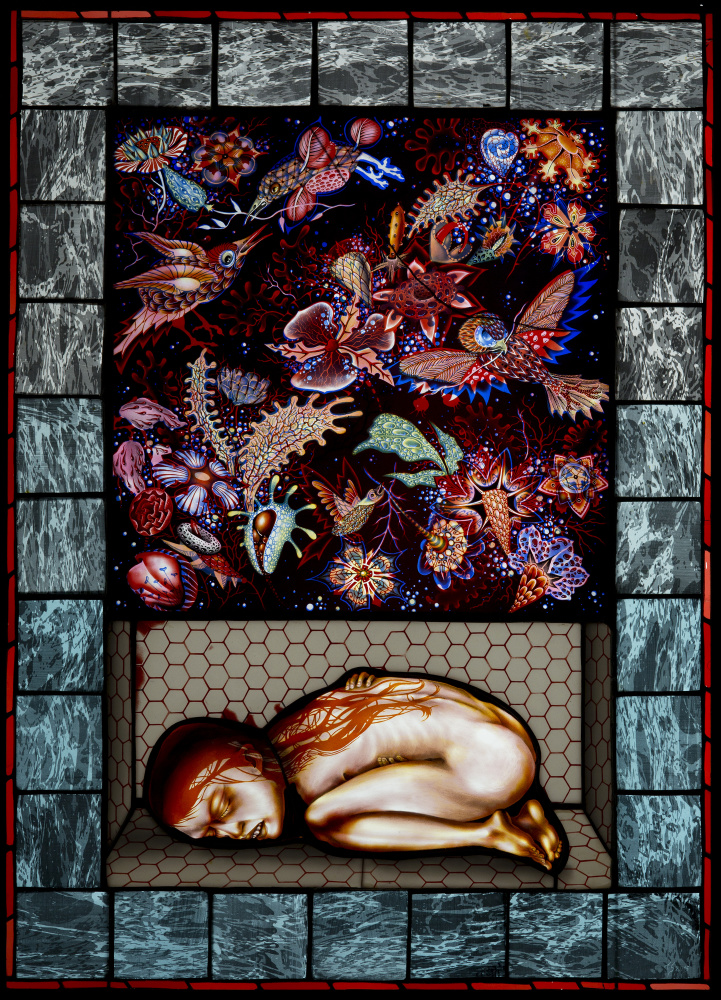
Agony and Ecstasy: Contemporary Stained Glass by Judith Schaechter was organized by the Chrysler Museum of Art.
A Peek Inside the Artist’s Studio
Judith Schaechter’s process is based on traditional stained-glass techniques, but her work is complex and often experimental in nature. Many of the creative decisions and color choices are left to the actual moment of working with glass. Finished or in-process glass elements are often stored away “until such a time as a resolution for how to use them is revealed.”
STEP 1
Doodling
Much of Judith Schaechter’s work is improvisational and made without a prior plan. The artist does a lot of doodling. “This distraction frees me to mess up. All my best work seems to result from accidents and mistakes,” she says.
Pencil sketch
cartoon of
the figure in
The Florist
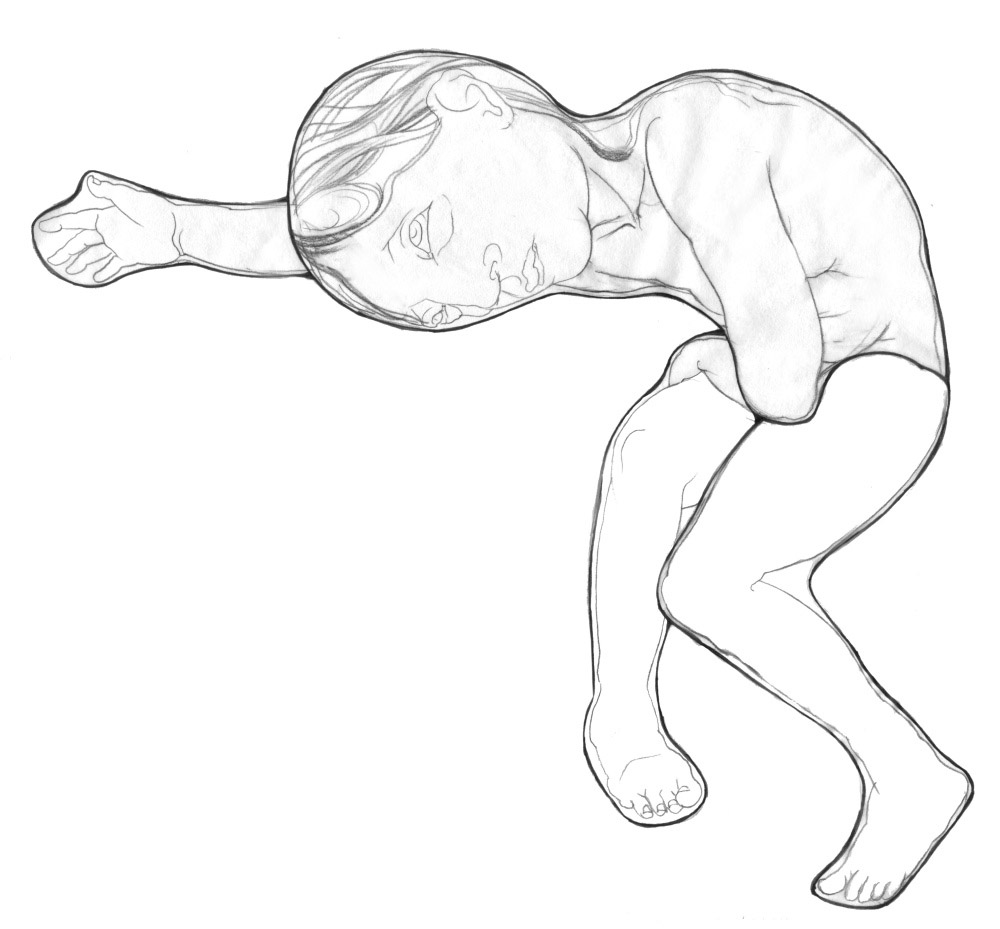
STEP 2
Cutting
Once the artist has an idea, she turns a doodle into a cartoon that shows how to cut and fit together the pieces of glass. Flat sheets of hand-blown “flash” glass (pale or colorless glass with a very thin veneer of intense color on the surface) are cut using a steel wheel-cutter. The shapes are refined using special pliers, and the edges are smoothed by grinding.
STEP 3
Sandblasting
Areas of color are removed from the flash glass by sandblasting (using sand at high pressure to abrade the exposed surface of the glass). This is done in stages and prepares the glass for refined detail work. It also creates a clear space for the colors of the other glass layers to show through. For example, red flash glass can be sandblasted to remove the surface color so that something blue, green, pink, or yellow can appear through the now clear glass.
STEP 4
Engraving and Filing
Detailed imagery is drawn onto the flash glass with permanent marker. In a subtractive process that removes the thin surface layer of color, the image is engraved into the glass using a series of tools. Diamond hand files are used to create tonal variations within the remaining color of the flash glass. This is the most intensive and time-consuming step in the entire process.
Individual panes of
sandblasted and
engraved red, blue, and
pink flash glass that will
be used for the figure

STEP 5
Painting
Ninety-nine percent of the color in a work is generated by layering engraved and filed flash glass, but a minimal amount of painting is done for select details. Black vitreous paint is applied to the glass and fired in the kiln at 1,250°F. Two to three firings allow for rich, black tonal variation. Crimson enamel or thin washes of silver stain (for a color yellow) may be applied and fired to create additional effects.
STEP 6
Repeat Engraving, Filing, or Painting
Some stages may be repeated multiple times to achieve a desired effect.
STEP 7
Fire Polishing and Varnishing
When decoration is complete, the surface of the glass is polished with heat in the kiln or coated with a thin layer of acrylic varnish.
STEP 8
Layering
Flash glass panes are stacked one on top of another to create a multicolored composition up to five layers deep.
STEP 9
Assembling
Thin copper foil is wrapped around the edges of each piece of glass, which are then soldered together. On rare occasions, the artist joins the glass pieces with traditional lead cames (grooved strips of lead) instead of copper foil. To make a light box, the work is placed in a zinc frame and fitted with a light source for illumination.
The final figure
assembled from
stacked layers of
engraved flash glass
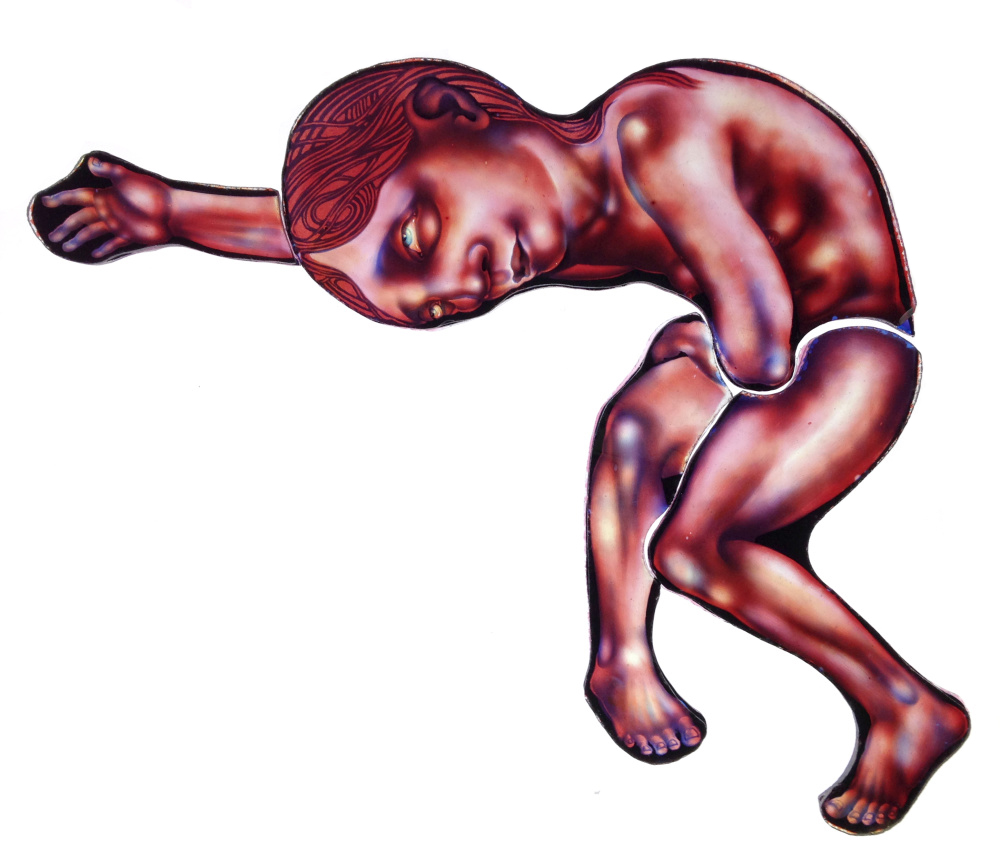
Exhibition Programming
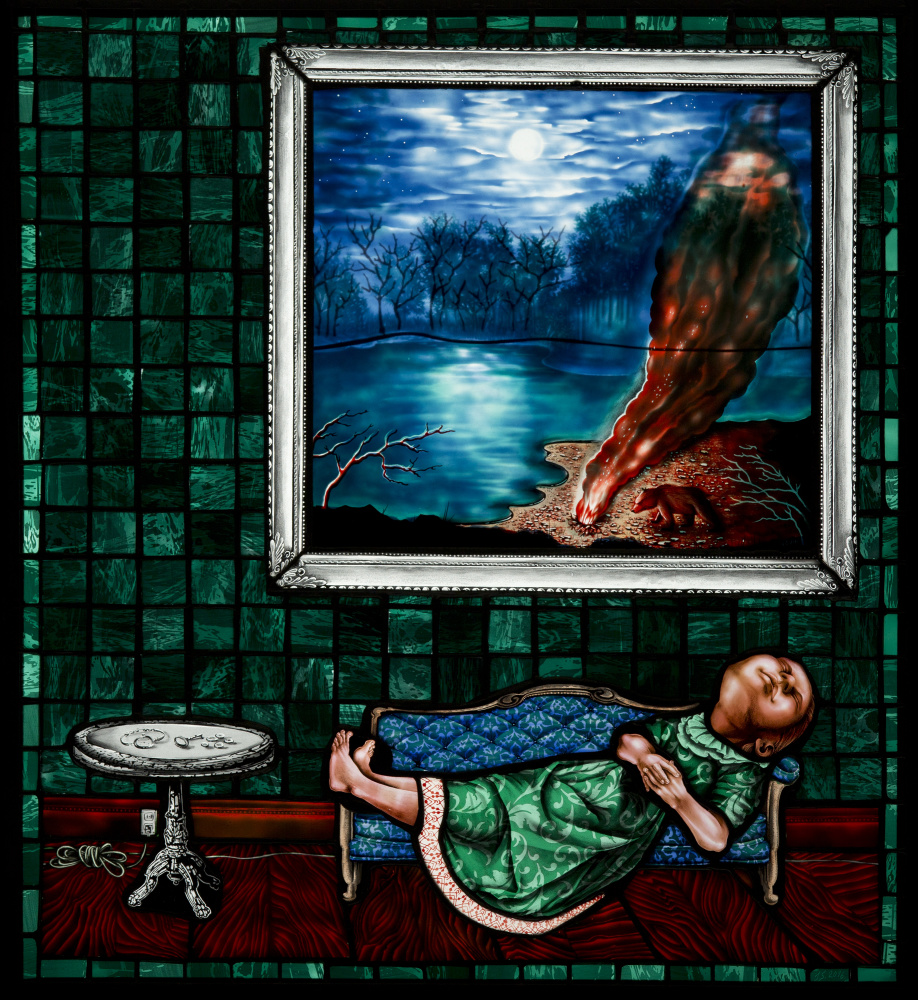
Judith Schaechter’s stained glass artworks are so detailed that they are often mistaken for paintings. Learn about her technique and discover how she updates a very old medium to present contemporary ideas when she discusses her works on view. Sign up
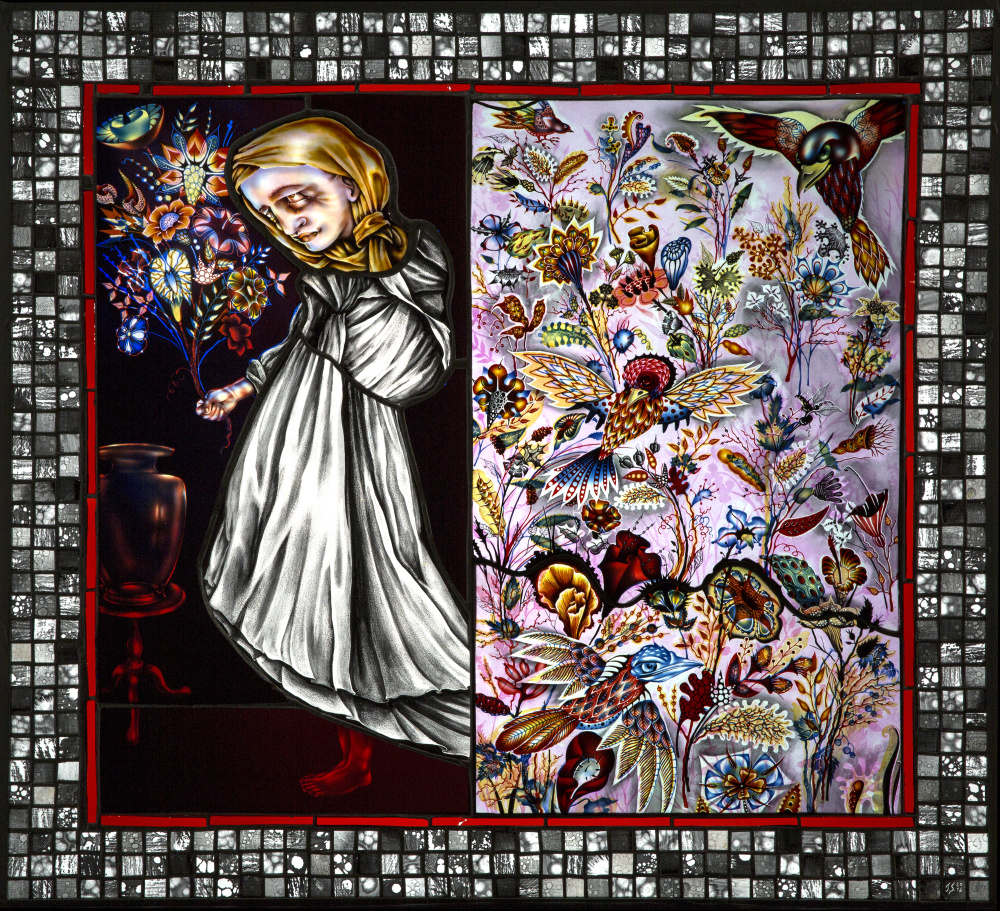
Join Carolyn Swan Needell, PhD for a discussion of the history of stained glass, including the Chrysler Museum's stunning Tiffany collection and contemporary artist Judith Schaechter.
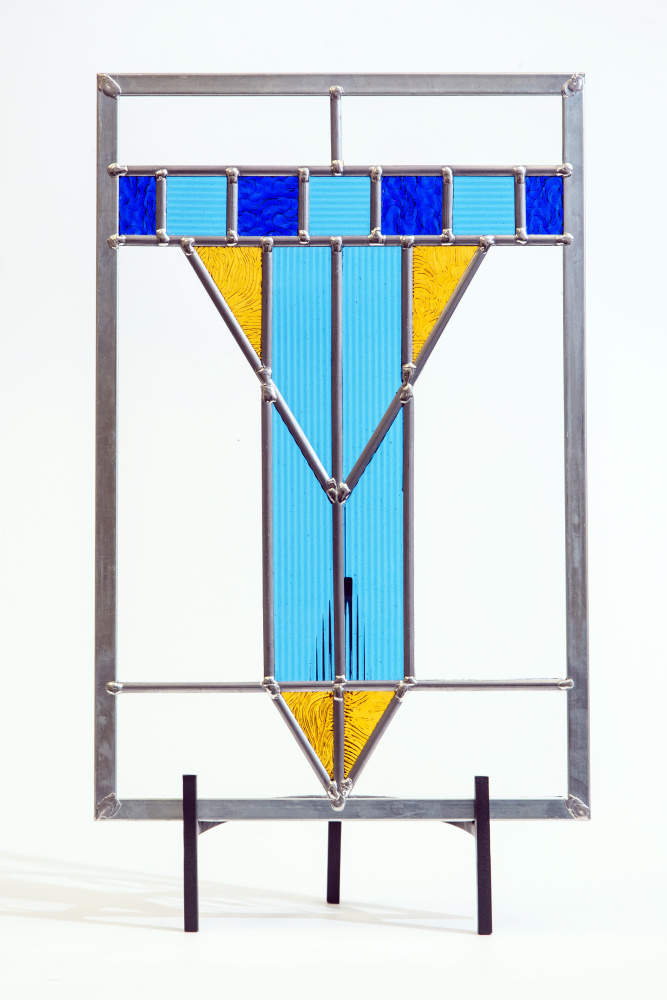
Stained Glass Suncatcher: Cut, foil-wrap, and solder flat glass into your own design for a decorative glass panel Sign up
On view right now
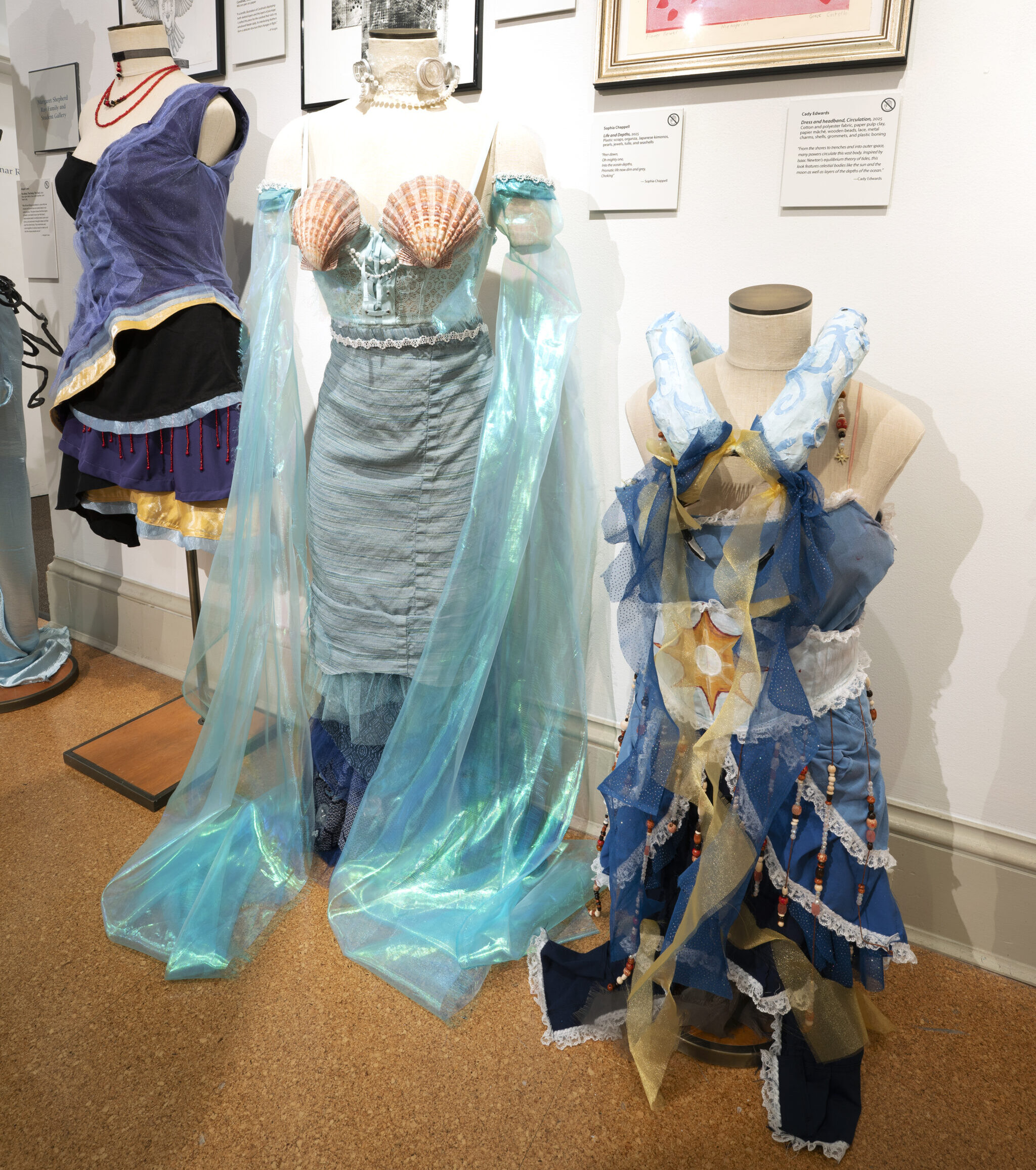
Layers: Mixed Media Work and the Eleventh Annual Wearable Arts Exhibition
Exhibition Details
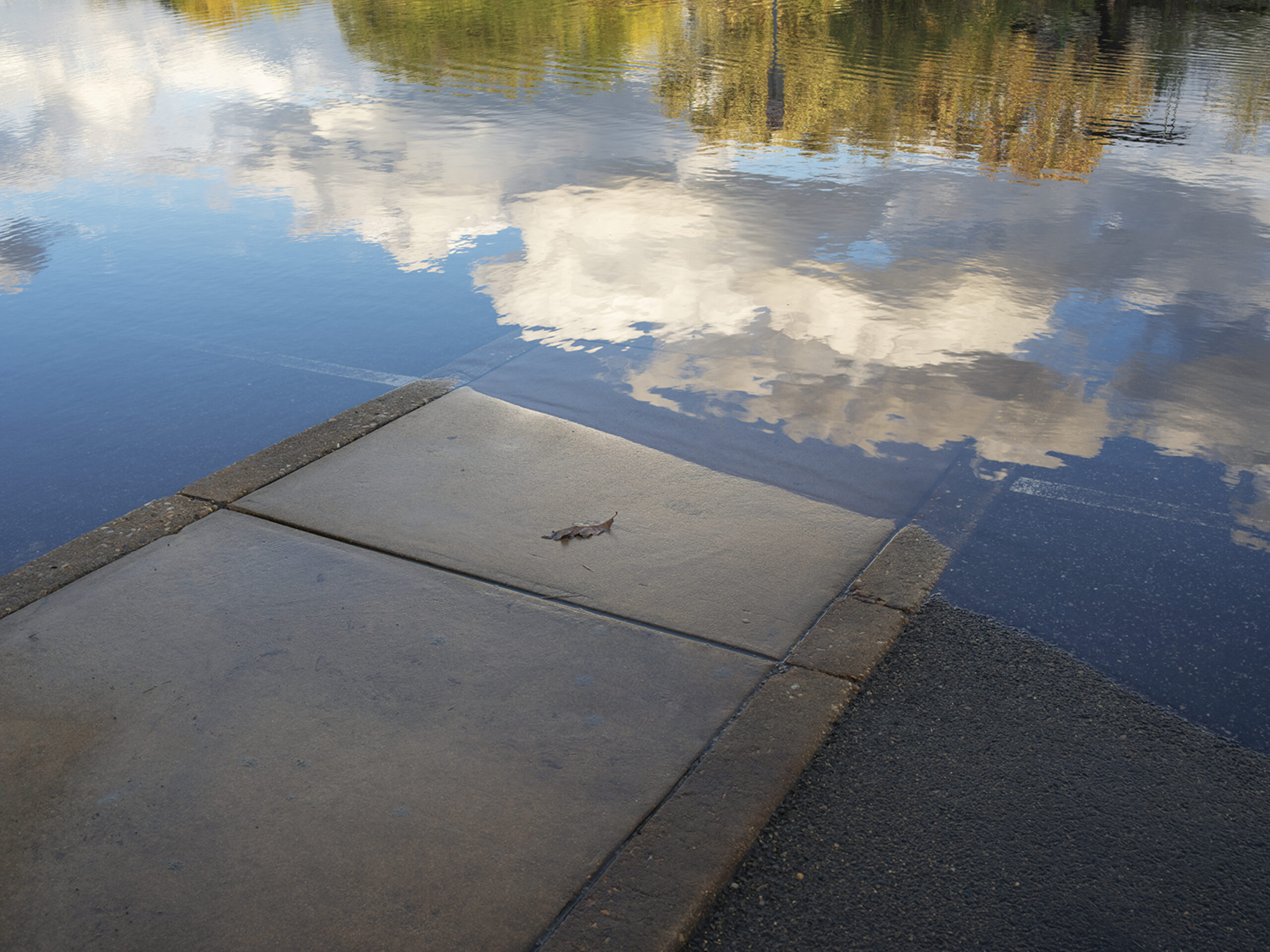
Greta Pratt: Jamestown is Sinking
Exhibition Details


